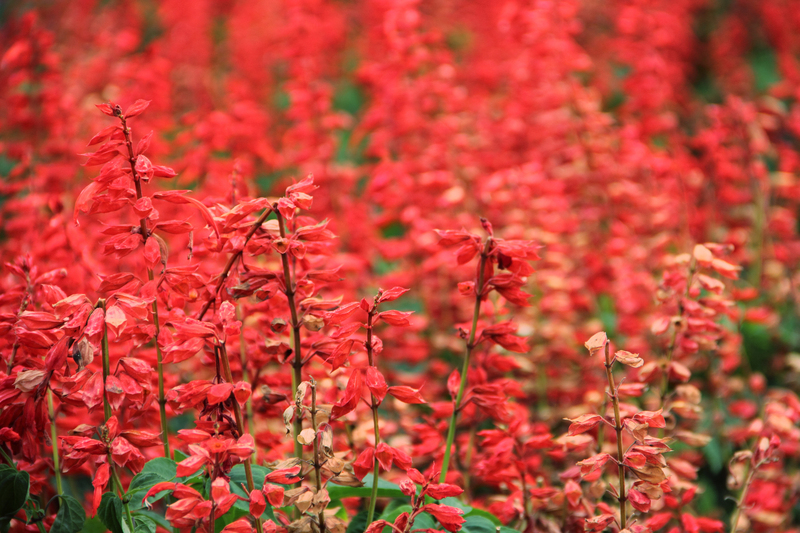Installing Garden Drains: A Step-by-Step Guide
Posted on 24/07/2024
Effective drainage is crucial for maintaining a healthy and beautiful garden. Without it, rainwater and irrigation can turn your landscaping into a quagmire, drowning plants and making pathways impassable. This step-by-step guide will walk you through installing garden drains to ensure your outdoor space remains lush and vibrant.
Why You Need Garden Drains
Poor drainage can lead to numerous problems including soil erosion, plant root rot, and mosquito breeding grounds. Installing a garden drain can resolve these issues, promoting a healthier garden environment. Whether you're dealing with a minor puddling problem or full-scale flooding, the right drainage system can make all the difference.

Types of Garden Drains
There are several types of drainage systems you can install, but the two most common for gardens are French drains and surface drains.
- French Drains: A French drain is a trench filled with gravel or rock with a perforated pipe that redirects surface water and groundwater away from an area.
- Surface Drains: These consist of grates or channels that collect runoff from the surface and route it elsewhere. They are ideal for areas with heavy rainfall or low spots that accumulate water.
Tools and Materials You'll Need
Before beginning, gather all necessary tools and materials. This includes:
- Shovel
- Gravel
- Perforated pipe
- Geotextile fabric
- Level
- Grass seed or turf
- Drainage grates (for surface drains)
Step-by-Step Installation Guide
Step 1: Plan Your Drainage System
Begin by evaluating your garden to identify the areas where water collects. Draw a simple map to mark out where you plan to dig trenches and install drains. Measure the length and width to purchase the right amount of materials.
Step 2: Dig Trenches
Using a shovel, dig trenches where you plan to install the drains. The trenches should slope away from the house to ensure water moves in the desired direction. A good rule of thumb is a slope that drops 1 inch for every 8 feet.
Step 3: Lay Down Geotextile Fabric
Line the trench with geotextile fabric to prevent soil from clogging the drain. The fabric should extend across the bottom and sides of the trench.
Step 4: Add a Layer of Gravel
Pour a layer of gravel about 2 inches deep into the trench. This helps to support the drainpipe and allows water to flow freely.
Step 5: Place the Perforated Pipe
Place the perforated pipe on top of the gravel layer, ensuring the holes face downward. This setup allows water to enter the pipe and be carried away from the garden area.
Step 6: Cover with More Gravel
Cover the pipe entirely with more gravel. Make sure the gravel layer is at least 3-4 inches deep to protect the pipe and promote effective drainage.
Step 7: Rebury the Trench
Finally, fold the geotextile fabric over the gravel and pipe, then cover it with soil. Replant grass seed or turf over the trench to restore the garden's appearance.
Pros and Cons of Garden Drains
Before you undertake this project, it's important to understand the pros and cons.
Pros
- Prevents water accumulation and soil erosion
- Promotes healthier plant growth
- Reduces mosquito breeding grounds
- Minimal maintenance
Cons
- Initial installation can be labor-intensive
- Costs can add up depending on the size of the garden
- Requires proper planning and measurements
Tips for Successful Drain Installation
- Always check for underground utilities before digging.
- Wear appropriate safety gear, including gloves and eye protection.
- Consider consulting with a landscaping professional for large projects.
- Regularly inspect and maintain the drains to ensure peak performance.

Key Takeaways
- Garden drains are essential for preventing water-related issues.
- Proper planning and execution can make the installation process smoother.
- Understanding the pros and cons helps in making informed decisions.
- Regular maintenance ensures longevity and efficiency.
Conclusion
Installing garden drains is a practical way to preserve the integrity of your garden and ensure it remains a beautiful and enjoyable space. Although the process requires some labor and investment, the benefits far outweigh the drawbacks. With proper planning, the right tools, and regular maintenance, your garden will thrive in even the wettest conditions.



